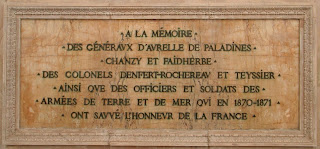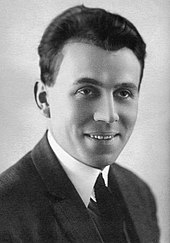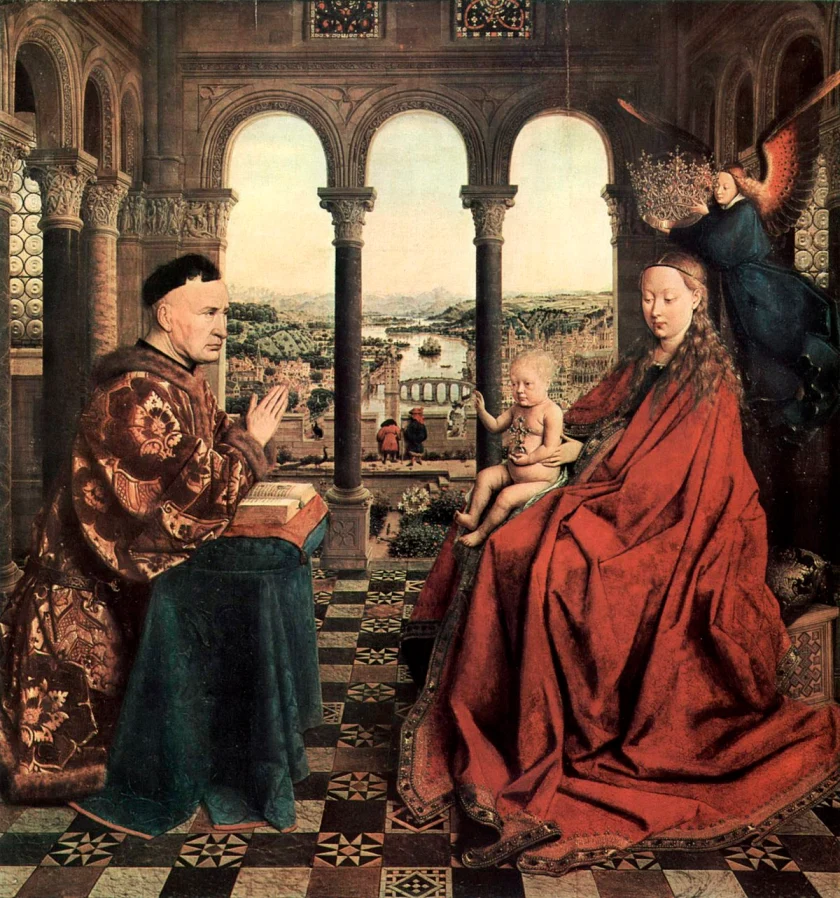De retour du Panthéon (celui de Paris) – Impressions troubles
Dans la crypte, maintenant, où s’attardent les visiteurs plus que sous les trois coupoles. Les derniers installés, Missak et Mélinée Manouchian, ont droit à une exposition tout en rouge, de quoi rendre un peu jaloux les vingt-et-un autres résistants étrangers raflés avec eux en novembre 1943. Ils sont ainsi 76 hommes et seulement 7 femmes à être honorés, laissant 217 emplacements vides. De quoi rendre justice à bien des femmes, me dis-je. Dans une espèce de désordre qui est celui de ces moments où quelques idées me viennent à l’esprit simultanément, je pense à Olympe de Gouges, pionnière dans la militance des droits de la femme, au courage bien plus prononcé que nombre de ses contemporains mâles révolutionnaires ; à Jeanne d’Arc, pourtant la plus célèbre des Françaises ; à Alice Guy, pionnière du cinéma français que les Lumière et les Gaumont associés ont tout fait pour la rendre invisible ; Charlotte Perriand qui, en matière d’architecture, vécut un destin comparable, écartée de l’Histoire par Le Corbusier ; et pourquoi pas les Mères Lyonnaises, puisque depuis 2010, la gastronomie française, qui leur doit tant, est inscrite au patrimoine mondial de l'Humanité…
Mes élucubrations sont interrompues quand me voici face à la plaque commémorative des combattants de la guerre de 1870. Le nom d'Aurelle de Paladines saute aux yeux, pour avoir sauvé l’honneur de la France. Aurelle de Paladines ! qui, trahissant Gambetta dans le sillage de Thiers, a ouvert la voie aux Prussiens pour le siège de Paris quand la victoire était à portée des chassepots. Je cite Henri Guillemin :
"Le 29 octobre 1870, ayant constitué, en trois semaines, et sans autre miracle que celui de son énergie, une puissante armée sur la Loire, Gambetta est en mesure de pulvériser les 40 000 Bavarois qu’il a devant lui et de débloquer la capitale. C’est, pour les Allemands, l’heure la plus aiguë de la guerre, l’instant où le sort va se renverser ; Guillaume [I de Prusse], Bismarck, Moltke et Frédéric-Charles [de Prusse, commandant la 2ème armée, vainqueur du siège de Metz où, contre toute attente, s'était enfermé Bazaine], le reconnaîtront plus tard, avouant que, déjà, ils se préparaient à évacuer Versailles. Mais M. Thiers veillait. C’est lui, avec l’aide du général d’Aurelle de Paladines, qui stoppe Gambetta, annule l’offensive. Paris libéré grâce à Gambetta, ce serait, pour M. Thiers, une avanie irréparable, un terrible obstacle qu’il ne saurait tolérer, dan son ascension vers la présidence. Il importe de savoir que le futur « libérateur du territoire » (il s’y retrouvera, financièrement) a pris soin, d’abord, d’assurer la victoire allemande, après avoir, au cours de son périple européen de septembre-octobre 1870, formellement garanti à la Prusse qu’elle pouvait compter sur lui pour l’annexion de Strasbourg et de Metz. On lui cassera les reins au Gambetta, capable, avec sa « résistance républicaine », de préparer, malgré lui peut-être, d’affreux lendemains aux possédants. C’est la bête noire de toutes les puissances établies ; il a contre lui, à la fois, les bureaux de la Guerre, le gouvernement de Paris, M. Thiers, M. de Bismarck et tout ce que la France compte d’honnêtes gens – et d’honnêtes femmes -, de M. Ernest Renan à Mgr de Bonnechose et de Louis Veuillot à Mme Sand.
Les voilà, les étranges circonstances nationales d’où surgira, en mars 1871, la Commune de Paris. On le connaît trop peu, d’ordinaire, cet arrière-plan. Aussi ai-je tenu à en dessiner, ici, les grands traits. Travail, je pense, utile pour interpréter sans erreur un des plus poignants épisodes de l’Histoire humaine, chargé de sens et d’espoir."
(Henri Guillemin Introduction à Georges Soria, Grande histoire de la Commune, 1970)
Or, pendant que le Paladine retourné par Thiers prétexte de la boue pour rester assis auprès du poêle, Baroche, lui, sous la pluie et dans le froid, se prépare pour l’offensive, bien qu’abandonné par l’État- major, au Bourget, sous la mitraille prussienne ! Pas découragé pour autant : « Nous ne céderons pas, nous nous ferons tuer, plutôt ! Moi, je resterai !... Aux créneaux !... » Avec ses quelques hommes et les débris d’un autre bataillon, Baroche continue le combat, mais la position n’est vraiment pas tenable. Les Prussiens canardent les troupes françaises comme ils l’ont fait à Gravelotte deux mois plus tôt avant d’assiéger Metz. Baroche atteint à l’œil se désespère de ne plus pouvoir viser, c’est fâcheux, avoue-t-il, puis, ainsi aveuglé ne tarde pas à être foudroyé définitivement, touché en plein le cœur par une balle qu’il n’avait pas vue. C’était fatal.
(Extrait de La femme sans prénom, que vous trouverez ici à un prix que même Harpagon n’aurait osé imaginer.)
Sur Baroche, injustement absent du Panthéon car pour le coup véritable héros de la guerre de 1870 et plus que tout autre sauveur de l'honneur de la France :
Anonyme, Ernest Baroche, commandant du 12e bataillon de mobiles de la Seine au Bourget, 28, 29, 30 octobre 1870 (1872). Consultable ici.
-------
Visit of the Pantheon, designed to be the Saint-Denis cathedral of the Bourbons, with a crypt of 300 places, which has become a mausoleum for currently eighty-one "Great Men" to whom the Fatherland is grateful to the point of deifying them, since the place, by etymology, is dedicated to all the gods (πάν-θειον; pántheion; “of all the gods”). It was Soufflot who breathed life into the place, and he was well inspired: the proportions he gave it, the light he organized there made it the heir of his Roman model. It lacks the patina of time, everything is still too clean, too neat, in a word: immarcescible, like the glories celebrated. The hagiographical paintings of Gros, Puvis de Chavannes, Cabanel and others, the sculptures of forgotten academic authors (apart from Dalou?) seem from yesterday while being from another century. In a gesture about which our current President of the Republic, despite his irrepressible penchant, hardly boasted, he had six installations by Anselm Kiefer installed there, for a small million euros. Appropriately, they mark the traces of a past time: disintegration, dust, punctuate these relics of the Great War (as if the second really was, second).
In the crypt, now, where visitors linger more than under the three domes. The last ones installed, Missak and Mélinée Manouchian, were entitled to an exhibition all in red, enough to make the twenty-one other foreign resistance fighters rounded up with them in November 1943 a little jealous. There were thus 76 men and only 7 women in be honored, leaving 217 empty slots. Enough to do justice to many women, I tell myself. In a kind of disorder which is that of those moments when a few ideas come to my mind simultaneously, I think of Olympe de Gouges, a pioneer in women's rights activism, with much greater courage than many of her male contemporaries revolutionaries; to Joan of Arc, the most famous of French women; to Alice Guy, a pioneer of French cinema whom the Lumière and associated Gaumonts did everything to make invisible; Charlotte Perriand who, in terms of architecture, experienced a comparable destiny, excluded from History by Le Corbusier; and why not the Mères Lyonnaises, since since 2010, French gastronomy, which owes so much to them, has been listed as a World Heritage Site…
My rantings are interrupted when I am faced with the commemorative plaque of the combatants of the war of 1870. The name of Aurelle de Paladines jumps out, for having saved the honor of France. Aurelle de Paladines! who, betraying Gambetta in the wake of Thiers, opened the way to the Prussians for the siege of Paris when victory was within reach of the Chassepots. I quote Henri Guillemin:
"On October 29, 1870, having constituted, in three weeks, and without any other miracle than that of his energy, a powerful army on the Loire, Gambetta was able to pulverize the 40,000 Bavarians he had in front of him and to unblock the capital. It is, for the Germans, the most acute hour of the war, the moment when fate will be reversed; William [I of Prussia], Bismarck, Moltke and Frederick-Charles [of Prussia, commanding the 2nd Army, winner of the siege of Metz where, against all expectations, Bazaine had locked himself up], recognized him later, admitting that they were already preparing to evacuate Versailles. But Mr. Thiers was watching. It was him, with the help of General d'Aurelle de Paladines, who stopped Gambetta, canceled the offensive. Paris liberated thanks to Gambetta, it would be, for Mr. Thiers, an irreparable setback, a terrible obstacle that he could not tolerate, in his rise to the presidency. It is important to know that the future “liberator of the territory” (he will find himself there, financially) took care, first, to ensure the German victory, after having, during his European journey from September-October 1870, formally guaranteed to Prussia that it could count on him for the annexation of Strasbourg and Metz. We will break his back at Gambetta, capable, with his “republican resistance”, of preparing, in spite of himself perhaps, terrible tomorrows for the wealthy. It is the bane of all established powers; he has against him, at the same time, the War Offices, the government of Paris, Mr. Thiers, Mr. Bismarck and all that France has of honest people - and honest women -, Mr. Ernest Renan to Mgr de Bonnechose and from Louis Veuillot to Mme Sand.
Here they are, the strange national circumstances from which the Paris Commune arose, in March 1871. We usually know too little about this background. So I wanted to draw the main features here. Work, I think, useful for interpreting without error one of the most poignant episodes in human history, full of meaning and hope."
(Henri Guillemin, Introduction to Georges Soria, Grande histoire de la Commune, 1970)
Now, while Paladine returned by Thiers under the pretext of the mud to remain seated near the stove, Baroche, in the rain and in the cold, prepares for the offensive, although abandoned by the General Staff, at Le Bourget, under Prussian grapeshot! Not discouraged, however: “We will not give in, we will rather be killed!” I will stay!... In the battlements!..." With his few men and the remains of another battalion, Baroche continued the fight, but the position was really not tenable. The Prussians bombard the French troops as they did at Gravelotte two months earlier before besieging Metz. Baroche, hit in the eye, despairs at no longer being able to aim, it's unfortunate, he admits, then, thus blinded, it doesn't take long to be struck down definitively, hit right in the heart by a bullet that he hadn't seen. This was fatal.
(Excerpt from LaFemme sans prénom, which you will find here at a price that even Harpagon would not have dared to imagine.)
On Baroche, unjustly absent from the Pantheon because for the real hero of the war of 1870 and more than any other savior of the honor of France:
Anonymous, Ernest Baroche, commander of the 12th mobile battalion of the Seine at Le Bourget, October 28, 29, 30, 1870 (1872). Available here.
------
Visita del Pantheon, concepito per essere la cattedrale Saint-Denis dei Borboni, con una cripta di 300 posti, divenuto mausoleo di ottantuno Grandi Uomini ai quali la Patria è grata al punto da divinizzarli, poiché il luogo, per etimologia, è dedicato a tutti gli dei (πάν-θειον; pantheion; “di tutti gli dei”). È stato Soufflot a dare vita a questo luogo, e ne è stato ben ispirato: le proporzioni che gli ha dato, la luce che vi ha organizzato ne hanno fatto l'erede del suo modello romano. Manca la patina del tempo, tutto è ancora troppo pulito, troppo lindo, in una parola: immarcibile, come le glorie celebrate. I dipinti agiografici di Gros, Puvis de Chavannes, Cabanel e altri, le sculture di autori accademici dimenticati (a parte Dalou?) sembrano di ieri pur essendo di un altro secolo. Con un gesto di cui il nostro attuale Presidente della Repubblica, malgrado la sua irrefrenabile passione per la cosa, difficilmente si vanta, ha fatto installare lì sei installazioni di Anselm Kiefer, per un piccolo milione di euro. Opportunamente segnano le tracce di un tempo passato: disgregazione, polvere, punteggiano queste reliquie della Grande Guerra (come se la seconda lo fosse davvero, seconda).
Nella cripta, adesso, dove i visitatori si soffermano più che sotto le tre cupole. Gli ultimi insediati, Missak e Mélinée Manouchian, ebbero diritto ad una mostra tutta in rosso, tanto da far ingelosire gli altri ventuno resistenti stranieri radunati con loro nel novembre 1943. Erano quindi 76 uomini e solo 7 donne essere onorato, lasciando 217 posti vuoti. Abbastanza per rendere giustizia a tante donne, mi dico. In una sorta di disordine che è quello di quei momenti in cui mi vengono in mente poche idee contemporaneamente, penso a Olympe de Gouges, pioniera dell'attivismo per i diritti delle donne, con molto più coraggio di molti dei suoi contemporanei rivoluzionari maschi; a Giovanna d'Arco, la più famosa delle donne francesi; ad Alice Guy, pioniera del cinema francese che i Lumière e i soci Gaumont fecero di tutto per rendere invisibile; Charlotte Perriand che, in termini di architettura, visse un destino analogo, esclusa dalla Storia da Le Corbusier; e perché non le Mères Lyonnaises, visto che dal 2010 la gastronomia francese, che tanto deve loro, è stata iscritta nel Patrimonio dell'Umanità...
I miei farneticazioni si interrompono quando mi trovo di fronte alla targa commemorativa dei combattenti della guerra del 1870. Salta fuori il nome di Aurelle de Paladines, per aver salvato l'onore della Francia. Aurelle de Paladines! il quale, tradendo Gambetta al seguito di Thiers, aprì la strada ai prussiani per l'assedio di Parigi quando la vittoria era a portata di mano degli Chassepot. Cito Henri Guillemin:
"Il 29 ottobre 1870, avendo costituito, in tre settimane, e senza altro miracolo che quello della sua energia, un potente esercito sulla Loira, Gambetta poté polverizzare i 40.000 bavaresi che aveva davanti e sbloccare la È, per i tedeschi, l'ora più acuta della guerra, il momento in cui il destino sarà rovesciato: Guglielmo [I di Prussia], Bismarck, Moltke e Federico Carlo [di Prussia, comandante della 2a Armata, vincitore della l'assedio di Metz dove, contro ogni aspettativa, Bazaine si era rinchiuso], lo riconobbe più tardi, ammettendo che si stavano già preparando a evacuare Versailles. Ma il signor Thiers stava guardando. Era lui, con l'aiuto del generale d'Aurelle de Paladines, che fermò Gambetta, annullò l'offensiva. Parigi liberata grazie a Gambetta, sarebbe per il signor Thiers un fallimento irreparabile, un ostacolo terribile che non poteva tollerare, nella sua ascesa alla presidenza. sappiate che il futuro “liberatore del territorio” (vi si ritroverà, finanziariamente) si occupò innanzitutto di assicurare la vittoria tedesca, dopo aver, nel corso del suo viaggio europeo del settembre-ottobre 1870, garantito formalmente alla Prussia che avrebbe potuto contare su di lui per l'annessione di Strasburgo e Metz. Gli spezzeremo la schiena a Gambetta, capace, con la sua “resistenza repubblicana”, di preparare, suo malgrado forse, domani terribili per i ricchi. È la rovina di tutti i poteri costituiti; ha contro di sé, allo stesso tempo, i ministeri della Guerra, il governo di Parigi, il signor Thiers, il signor Bismarck e tutto ciò che la Francia ha di persone oneste - e di donne oneste -, dal signor Ernest Renan a Mons. de Bonnechose e da Louis Veuillot alla signora Sand.
Eccole le strane circostanze nazionali da cui nacque la Comune di Parigi, nel marzo 1871. Di solito sappiamo troppo poco di questo contesto. Quindi ho voluto tracciare qui le caratteristiche principali. Opera, credo, utile per interpretare senza errori uno degli episodi più toccanti della storia umana, denso di significato e di speranza."
(Henri Guillemin Introduction a Georges Soria, Grande histoire de la Commune, 1970)
Ora, mentre Paladine ritornato da Thiers con il pretesto del fango per restare seduto vicino alla stufa, Baroche, sotto la pioggia e al freddo, si prepara all'offensiva, benché abbandonata dallo Stato Maggiore, a Le Bourget, sotto la mitraglia prussiana. ! Non scoraggiati, però: “Non cederemo, preferiremo farci uccidere!” Resterò!... Sui bastioni!..." Con i suoi pochi uomini e i resti di un altro battaglione, Baroche continuò la lotta, ma la posizione non era davvero sostenibile. I prussiani bombardano le truppe francesi come avevano fatto a Gravelotte due mesi prima prima di assediare Metz. Baroche, colpito a un occhio, si dispera di non poter più mirare, è un peccato, ammette, poi, così accecato, non ci mette molto a venire fulminato definitivamente, colpito dritto al cuore da una pallottola che non gli riesce non vedo, non l'avevo visto. È stato fatale.
(Estratto da La femme sans prénom, che troverete qui ad un prezzo che nemmeno Arpagone avrebbe osato immaginare.)
Su Baroche, ingiustamente assente dal Pantheon perché vero eroe della guerra del 1870 e più di ogni altro salvatore dell'onore della Francia:
Anonimo, Ernest Baroche, comandante del 12° battaglione mobile della Senna a Le Bourget, 28, 29, 30 ottobre 1870 (1872). Disponibile qui.



Commentaires
Enregistrer un commentaire